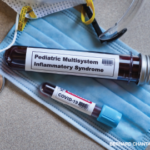MIS-C Distinct from Kawasaki Disease
Dr. Mehta notes that MIS-C case definitions from the CDC and the World Health Organization were “very broad, because they were designed for reporting cases rather than diagnostic purposes.” The task force relied on many sources of evidence and clinical pathways from several institutions, including the CHOP MIS-C clinical pathway, to develop their guidance.
As many early cases of MIS-C appeared, reports noted the clinical features closely resembled those seen with Kawasaki disease. Overlapping features include fever; conjunctival injection; oropharyngeal symptoms, such as red or cracked lips and strawberry tongue; rash; and cervical lymphadenopathy. The clinical guidance document specifies the ways in which MIS-C cases associated with SARS-CoV-2 differ from Kawasaki disease. For example, MIS-C patients exhibit a broader age range, and those with Kawasaki disease tend to be younger. MIS-C patients are more likely to display cardiac dysfunction, to have prominent gastrointestinal and neurologic symptoms and to present in shock.
Dr. Henderson also points out that Kawasaki disease is most common in those of East Asian descent, while cases of MIS-C are more common in patients of Afro-Caribbean and possibly Hispanic descent. “There may be biologic factors that explain this, or it may be due to socioeconomic factors and thus greater exposure to SARS-CoV-2,” she says. More research is needed to supply answers to these observed patterns.
A Stepped Approach
The task force reiterated that the majority of children with COVID-19 have mild symptoms and excellent outcomes. In fact, the group achieved consensus on outpatient evaluation for children with stable vital signs, provided physicians ensure close follow-up. However, MIS-C patients who develop additional symptoms, such as tachycardia, respiratory distress, evidence of mild renal or hepatic injury or other abnormal laboratory findings, should be considered for hospital admission. The guidance document includes a tiered diagnostic workup to aid in staging these patients, says Dr. Mehta.
Patients admitted to the hospital should be evaluated by specialists with expertise in MIS-C and managed by a multidisciplinary team, Dr. Henderson emphasized. The guidance document supplies specific advice regarding cardiac management. Moderate to high consensus was achieved on most of the directives regarding cardiac imaging intervals and what each should include. For example, a high measure of consensus was achieved for echocardiograms to be conducted at diagnosis and during clinical follow-up to evaluate ventricular/valvular function, pericardial effusion and coronary artery dimensions with measurements indexed to body surface area using z-scores.



